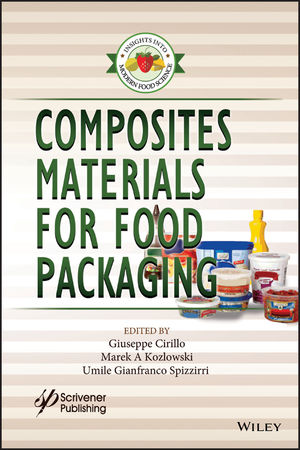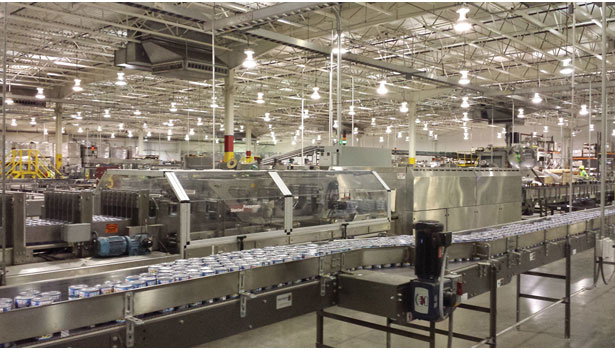Packaging Line Innovation
Packaging line innovation: Reaching for higher efficiencies
Robotics, advanced machine controls, software and OEE are just a few of the tools that can boost productivity on packaging lines.






Automation can boost output, increase efficiency, foster flexibility, improve quality, enhance safety and/or cut costs. For example, Salt of the Earth in Atlit, Israel uses a new €1 million packaging line to form, fill and seal larger polyethylene bags of tablet or granular products made from natural salt harvested from the Red Sea. Ofer Rokni, managing director of the company, reports, “Our new packaging line cut costs in human resources and packing materials [by replacing preformed bags with rollstock]. We save 44 percent in workforce expenses and have decreased the shifts from three to only one.”
The new line also:
- Offers an expanded size range (10 to 25kg)
- Improves package quality
- Eliminates malfunction risks experienced on the previous line
- Increases output
- Reduces waste via improved weighing
- Enhances worker safety and health via automated palletizing.
Before entering the new line, the salt tablets are conveyed to a rectangular, 100-ton divided silo at a rate of three tons per hour. The tablets are held there are for at least 24 hours to reduce the moisture in them. Then, a B&C Macchine Automatiche twin-tube vertical form/fill/seal machine with a specialized weighing system packages the tablets. An ABB palletizing robot handles the filled bags. The line also includes a lot number printer and pallet conveyors. “Manual soldering is no longer required in the packaging process, and the packaging is of higher quality,” notes Rokni. “All work is automatic without any manual interference.”
While Salt of the Earth is a success story, companies with lines that don’t run optimally may not realize the full benefits of automation. But metrics such as overall equipment effectiveness (OEE) can quantify how well a line runs and help locate areas for improvement. To help manufacturers identify what facilities/lines would receive the greatest benefit from improved OEE, the Operation Reliability Solutions Group of the Alliance for Innovation & Operational Excellence (AIOE) has developed an OEE Opportunity Calculator. Available for download at pmmi.org/aioe, the Microsoft Excel-based program is designed to provide a path to make it easier to implement OEE and foster consistency from plant to plant and company to company, explained Mark William Hanley, senior asset reliability manager at Land O’Lakes and chair of the Operation Reliability Solutions Group, during a Food Engineering webinar on the topic held earlier this year.
“Only six data points are required, and the Excel-based program is intended to be simple and fast without intruding on operations,” Scott Spencer, vice president, engineering at NBTY and a contributing member of AIOE, told the same webinar audience. It can be especially useful prior to investing a lot of time, effort or money in an OEE improvement project.
Data points involve either financial or operational information. “The financial data is usually the easiest because it comes directly from the finance and cost standards,” Spencer reported during the webinar. “But operational data may need to be collected from the plant floor.”
Financial data includes the number of units produced, total dollar budget for ingredients, raw materials and packaging, the budget for production labor wages and benefits, and other budgeted costs for the product made on the line being studied.
Operational data includes the raw material efficiency loss percentage (which accounts for the amount of extra material needed to cover scrap, waste and quality defects) and the production work center efficiency loss percentage (which quantifies how much scheduled time is lost due to unplanned stops or slow operation).
Once the data points are input, the tool automatically calculates the savings that would be achieved with a 10 or 25 percent improvement. It also allows users to plug in a more modest or aggressive percentage.
In a bottle filling line example cited during the webinar, the OEE Opportunity Calculator projected a 25 percent improvement would generate $5.8 million in savings, a 10 percent improvement would save $2.3 million, and a 5 percent improvement would save $1.1 million. The line currently fills 270 million bottles per year with 2 percent raw material efficiency loss and 53 percent production work center efficiency loss (primarily due to frequent changeovers).
Scalable to any operation, the OEE Opportunity Calculator is compatible with both manual and automated lines. However, a calculation projecting substantial savings from an OEE improvement is just the beginning of the OEE journey.
In an interview with Food Engineering, Hanley explains, “OEE itself will not help you improve the efficiencies, you need to delve into the components—availability [(uptime], performance [speed or rate] and quality [rejects]—to determine where your efforts will be best spent.”
To begin the analysis, Hanley recommends considering:
“Availability: Examine the downtime on each asset; see which one or two is really the cause of shutting down the line. From that, determine what is shutting down the asset. This could be equipment condition, being blocked or starved or operator effectiveness. Some tools to help this analysis include: Pareto charts, trending charts and scatter charts.
“Performance: Look at the speed—is the line running at the desired rate? What is causing the line to run slower? Operator settings? Product condition? Packaging material? Downtimes also cause rate loss as the line does not come up to full speed right away after a downtime—there is a start-up curve every time.
“Quality: Although not as easy to quantify, quality improvement provides the biggest impact for the effort. If you fix availability and performance, but not quality, you will just be producing bad product faster! Here you have to examine the defect and then identify the cause of the rejects and correct that situation.”
Next steps involve deciding whether to implement a continuous improvement methodology, change equipment and/or expand training for personnel, plus determining costs related to the chosen action(s).
Hanley provided an example from a company, prior to his experience with Land O’Lakes: an end-user with 10 lines that took the next steps and unlocked trapped capacity. Boosting OEE from an average of 63 percent to 89 percent increased throughput to the point where there was no need to acquire land and build a new facility to add more lines to meet growing demand. “This saved $9.2 million and eight months for a new line to be installed [after the additions or buildings were built],” reports Hanley.
The effort to unlock trapped capacity began with one line and the formation of a continuous improvement team consisting of operators, plus maintenance, engineering and continuous improvement/lean personnel. The team physically observed the line and enhanced data collection on line operation with an investment of $100,000. An analysis of historical and continued data showed bottlenecks as well as the main sources of downtime. In addition, Hanley says, “It was easy to see there was no ownership of the line.”
When OEE components—availability, performance and quality—were analyzed, performance and availability scored lowest. “It was determined the line was not balanced,” explains Hanley. “This caused machines to stop and start continuously, which affected the performance [speed] and the availability [uptime].” Performance also was affected by operators adjusting equipment and ramp-up times. Two critical assets were found to experience the most downtime, one due to wear and improper adjustment and the other due to the operators not being trained correctly on proper operation.
“Repairs were made, training was executed, and SOPs were drafted for maintaining and operating the line and all the assets,” says Hanley. Teams formed continue to meet once a month for review of the line operation and have found more improvements. “Ownership of the line is evident—everyone owns it!” reports Hanley. With such positive results, he reports, “the continuous improvement process was transferred to the remaining nine lines with equal success.”
More CI methods
There are many continuous improvement methodologies, including Six Sigma, lean, 5 Ys, fishbone, total productive maintenance (TPM) and total quality management. Each continuous improvement methodology has a slightly different focus, but typically includes three factors: operator ownership, reliability and data collection. These methodologies often are supported by manufacturing operations management software. For example, the Parsec Corp. TrakSYS system improves manufacturing execution, asset utilization and production on individual lines and across plants and enterprises. It not only collects production data, it also supports analytics and preventive maintenance plans.
For companies that adopt lean as their continuous improvement methodology, Bosch Rexroth offers a lean production and automation insights kit. It combines automation technology and best practices to help machine builders, system integrators and manufacturing end-users uncover wasted time, effort and resources within their operations and develop solutions to help them become more lean. (Visit www.boschrexroth-us.com/resourcekits.)
Spencer favors TPM. “It empowers people,” he explains. He also stresses the importance of reliability. “Reliability influences cost, scrap and waste, labor utilization and things like safety and quality,” he states. Since most safety and quality problems stem from stops and starts on the line, if equipment runs reliably, it produces better-quality products and minimizes the need for hands inside the machine. It also allows a line to complete a run of a given volume more quickly, generating immediate cost savings or the potential for higher output. For example, if a run of 500 million crackers takes five days to complete at 75 percent efficiency, boosting efficiency to 95 percent will allow the run to be completed in four days. Then, the line can either shut down for a day, saving energy and all the other expenses related to a day of production, or begin another run.
Spencer believes achieving reliability requires a focus on operator training and involvement, good machine design, a thorough maintenance program and the best data collection effort possible so information can be analyzed to identify root causes of problems. “Operator involvement is critical,” he states. “Operators are at the point of execution. To be successful, they need the knowledge and tools to operate the equipment, training on how to use those tools, the ability to identify potential issues before problems arise and clear expectations of boundaries [when to involve other personnel like mechanics]. It’s a long-term effort.”
Hanley agrees, noting OEM training is essential when a new machine is installed. “This training should be monitored to be sure it is consistent and thorough,” he explains. “Standard operating procedures and a future operator training [plan] need to be developed at this time. [Otherwise,] what tends to happen is the first operator is trained well. As this person runs the equipment, he/she tends to develop shortcuts and bad habits. When this operator trains a new one, these shortcuts and habits are part of the training. This process goes on so that when the 20th [operator] … is trained, he/she receives a small portion of the OEM training plus the bad habits of 19 other people. A properly trained and engaged operator is the key to high efficiencies,” he concludes.
Addressing changeover time
Although poorly trained or disengaged operators can cause downtime, its major source is often changeover. Consequently, projects that reduce changeover time can have a huge impact on costs. To identify possible downtime-reducing strategies and tactics, John Henry, a consultant who specializes in changeover, advocates an ESEE technique in his book, “Machinery Matters.” He says, “Eliminate unnecessary tasks; Simplify as much as possible; Externalize tasks that can be done while the line is running; and perform changeover Exactly.”1
Henry also offers several specific recommendations, such as the changeover process should be standardized and based on written standard operating procedures and checklists. Plus, tools should be eliminated, if possible, and if a tool is needed, a power model should be selected, if it will save time.2
Other downtime-reducing techniques Henry recommends include:
- Simplify cleaning
- Eliminate sensor adjustments by installing a sensor array to cover all the required positions
- Minimize ramp-up time
- Organize changeparts.3
Another potential downtime-reduction solution is the automation of all or part of the changeover function by using machines equipped with advanced controls and software, as well as placing servo motors and drives at adjustment points.
For example, Chicken of the Sea reduced downtime significantly, increased production 50 to 75 percent and reduced labor requirements 20 percent when it installed a Standard-Knapp 597 Tritium multipacker with a Robo-Wand wrapping module and 296 Continuum tray shrink packers to wrap four-packs of cans as well as six-, 10- and 12-packs.
The modular construction of the multipacker not only expedites changeover, it simplifies future adaptations. Each change part is specifically designed for the product being handled. Once the parts are installed, the operator selects the product on the human/machine interface, and the machine is ready to run.
A slide-out film bed makes access and maintenance to the film cutting area easier and quicker, and expedites recovery from jams. Monitoring sensors ensure the film remains in the correct position, cuts consistently and fully wraps all packs.
The high-speed wrapping module and servo control also expedite jam recovery. If the magnet-mounted wand encounters a downed can, it pops off, instead of breaking and potentially damaging other parts of the machine. With servo control, there’s no chain to adjust; the machine is up and running again as soon as operators clear the problem and reset the machine.
Robotic evolution
In recent years, robotic systems have evolved from a curiosity to an integral part of packaging lines, automating previously manual tasks or replacing hard automation. End-of-the-line applications handle higher upstream speeds and eliminate repetitive motion and heavy lifting related to case packing and palletizing. Robotic systems also operate upstream, typically in pick-and-place applications such as infeed or carton loading.
Characteristic of these upstream applications is the installation of six vision-equipped ABB Robotics FlexPicker IRB 340 delta robots to handle pretzels at Germany’s Roland Murten AG. The six robots lift individual pretzels by two loops and place them in a container. A camera transmits the coordinates of each pretzel to a computer equipped with ABB Robotic’s PickMaster software. The computer not only provides precise instructions to the robot for picking up the pretzel closest to it on the conveyor, it also calculates the shortest distance of travel, keeps track of how many pretzels have been stacked and signals when the container is full.
The robots handle the pretzels so gently, breakage rates have dropped from 10 to 12 percent to about 4 percent. Less breakage means higher productivity since fewer inspectors are needed to remove the broken pretzels by hand. The robots also are much quieter than the vacuum system the company previously used.
Robots may work independently or be integrated into a machine like a case packer. Some handle virtually any payload weight and speed requirement. The slowest units run at a few cycles per minute, while the fastest operate at 200 cycles per minute.
Robots excel at quickly adjusting to handle new products, counts and packaging configurations. Changeover is quick, too, and can be totally automated including removing and replacing the end-of-arm tool or gripper. Hanley says, “If the robot is selected correctly for the job and well maintained, it will help increase the OEE.”
“A properly sized robotic solution has excess capacity built into it and can handle the micro surges generated either naturally by the upstream process or manually by refeeding,” explains Jonathan Ferrell, packaging industry specialist at ABB Robotics. “Robots also have the advantage of flexibility. For a vision-guided system, the tolerances of allowable product can be opened or closed depending on the consistency of the upstream process, allowing as much of the product to be handled as one would like,” Ferrell says. “This can be taken further, gathering data on products in real time so trends can be evaluated and using the data to drive upstream changes. Robots also have the advantage of repeatability—picking and placing products within tenths of millimeters. Today’s vision systems perform simple inspections for size, shape and color far faster and more accurately than any operator, greatly increasing finished product quality.”
Many systems have transitioned away from proprietary robot controls to personal computers, programmable logic controllers or host machine controllers. As a result, systems are easier to program, operate and maintain.
The advent of food-grade robots designed specifically for packaging applications is expanding the use of robotics in the food and beverage industries. Machine vision, adaptive control, servo motion and software provide greater functionality. In addition, prices have declined, speeds are faster, and reliability is excellent.
“Robotics help improve the efficiency of a process,” Ferrell says. “They are fast and very accurate and provide extremely repeatable motion. Plus, they’re easy to change over, which minimizes downtime, and can work 24/7/365 without the need for scheduled production stops or pauses for breaks or shift changes. The effect of faster changeovers is especially realized in production environments where there are multiple changes per day or even per shift.”
In addition, robots can cut energy bills and save floor space. Robotic systems may consume less energy than hard automation performing the same task. Plus, “robots do not have any requirements for minimum lighting [and] offer more flexibility with heating or cooling and confined space requirements,” says Ferrell.
Faster, more efficient packaging lines are able to respond more quickly to market demands and reduce the need for both raw material and finished goods inventory. Finally, robots do not require health insurance, do not get repetitive motion injuries and can mitigate risks associated with labor turnover such as health and sanitation practices.
For more information:
Jonathan D. Ferrell, ABB Robotics, 303-797-4087, jonathan.d.ferrell@us.abb.com, www.abb.com
Vania Cecchin, B&C Macchine Automatiche, 39 049 596 5217, vania.cecchin@bec-italy.com, www.bec-italy.com
Amy Defayette, Bosch Rexroth Corp., 704-714-8567, amy.defayette@boschrexroth-us.com, www.boschrexroth-us.com
John Henry, CPP, 787-550-9650, johnhenry@changeover.com, www.changeover.com
Scott Klages, Parsec Corp., 714-996-5302, sklages@parsec-corp.com, www.parsec-corp.com
Judy Smith, Standard-Knapp, 860-342-1100 x354, jsmith@standard-knapp.com, www.standard-knapp.com
References:
1 Henry, John, Machinery Matters, Fajardo, PR, 2011, p. 107.
2 Henry, John, Machinery Matters, Fajardo, PR, 2011, pp. 21-25.
3 Henry, John, Machinery Matters, Fajardo, PR, 2011, pp. 21-25.
Looking for a reprint of this article?
From high-res PDFs to custom plaques, order your copy today!










